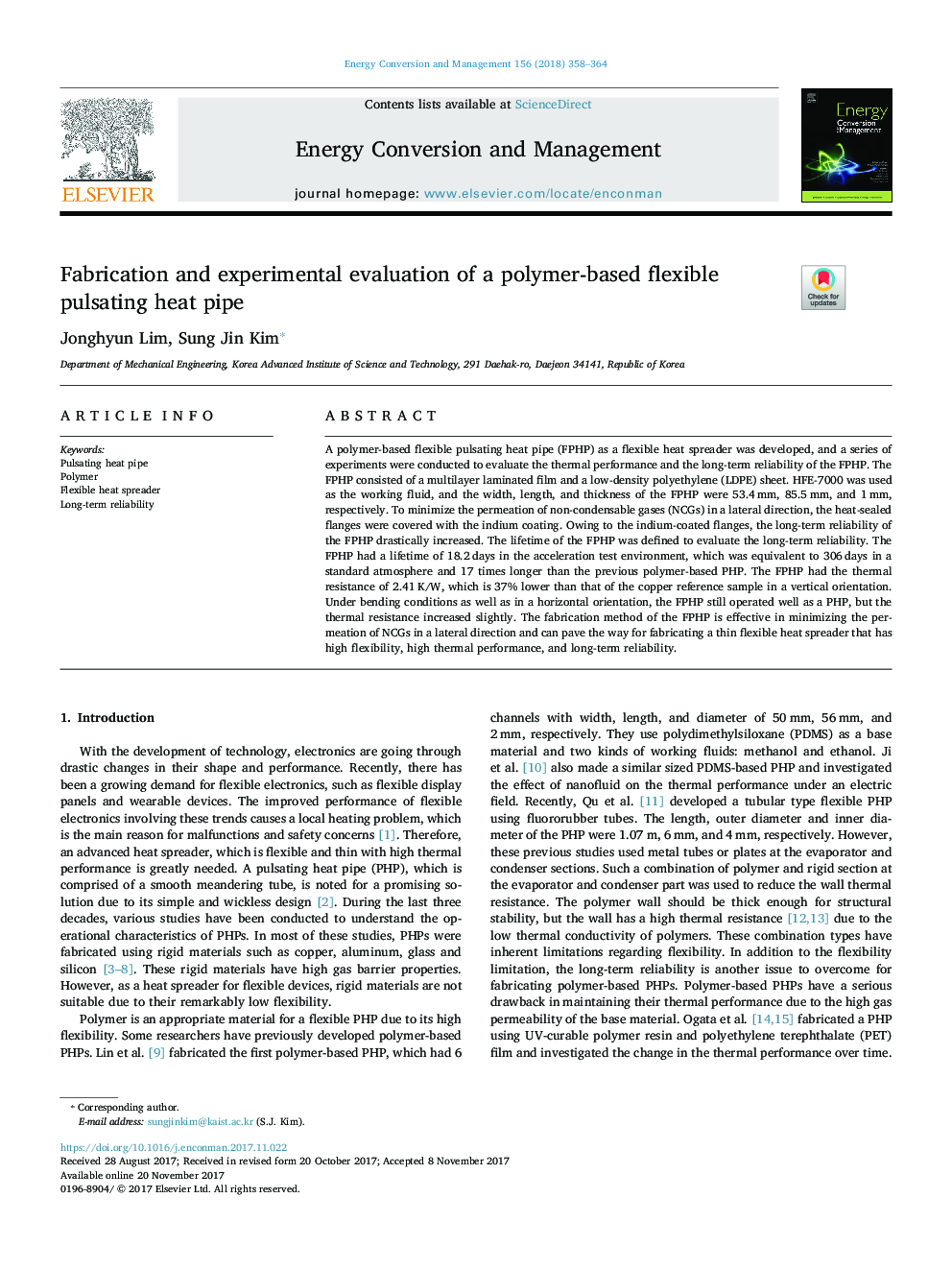| Article ID | Journal | Published Year | Pages | File Type |
|---|---|---|---|---|
| 7159497 | Energy Conversion and Management | 2018 | 7 Pages |
Abstract
A polymer-based flexible pulsating heat pipe (FPHP) as a flexible heat spreader was developed, and a series of experiments were conducted to evaluate the thermal performance and the long-term reliability of the FPHP. The FPHP consisted of a multilayer laminated film and a low-density polyethylene (LDPE) sheet. HFE-7000 was used as the working fluid, and the width, length, and thickness of the FPHP were 53.4â¯mm, 85.5â¯mm, and 1â¯mm, respectively. To minimize the permeation of non-condensable gases (NCGs) in a lateral direction, the heat-sealed flanges were covered with the indium coating. Owing to the indium-coated flanges, the long-term reliability of the FPHP drastically increased. The lifetime of the FPHP was defined to evaluate the long-term reliability. The FPHP had a lifetime of 18.2â¯days in the acceleration test environment, which was equivalent to 306â¯days in a standard atmosphere and 17 times longer than the previous polymer-based PHP. The FPHP had the thermal resistance of 2.41â¯K/W, which is 37% lower than that of the copper reference sample in a vertical orientation. Under bending conditions as well as in a horizontal orientation, the FPHP still operated well as a PHP, but the thermal resistance increased slightly. The fabrication method of the FPHP is effective in minimizing the permeation of NCGs in a lateral direction and can pave the way for fabricating a thin flexible heat spreader that has high flexibility, high thermal performance, and long-term reliability.
Related Topics
Physical Sciences and Engineering
Energy
Energy (General)
Authors
Jonghyun Lim, Sung Jin Kim,
